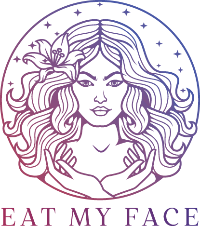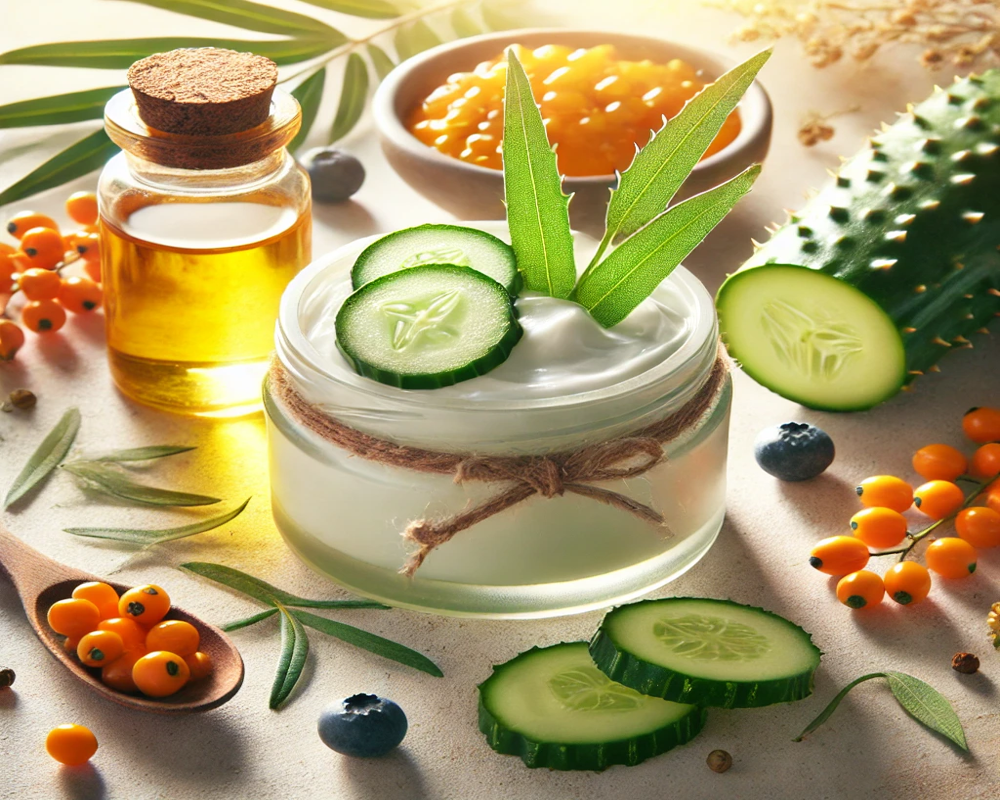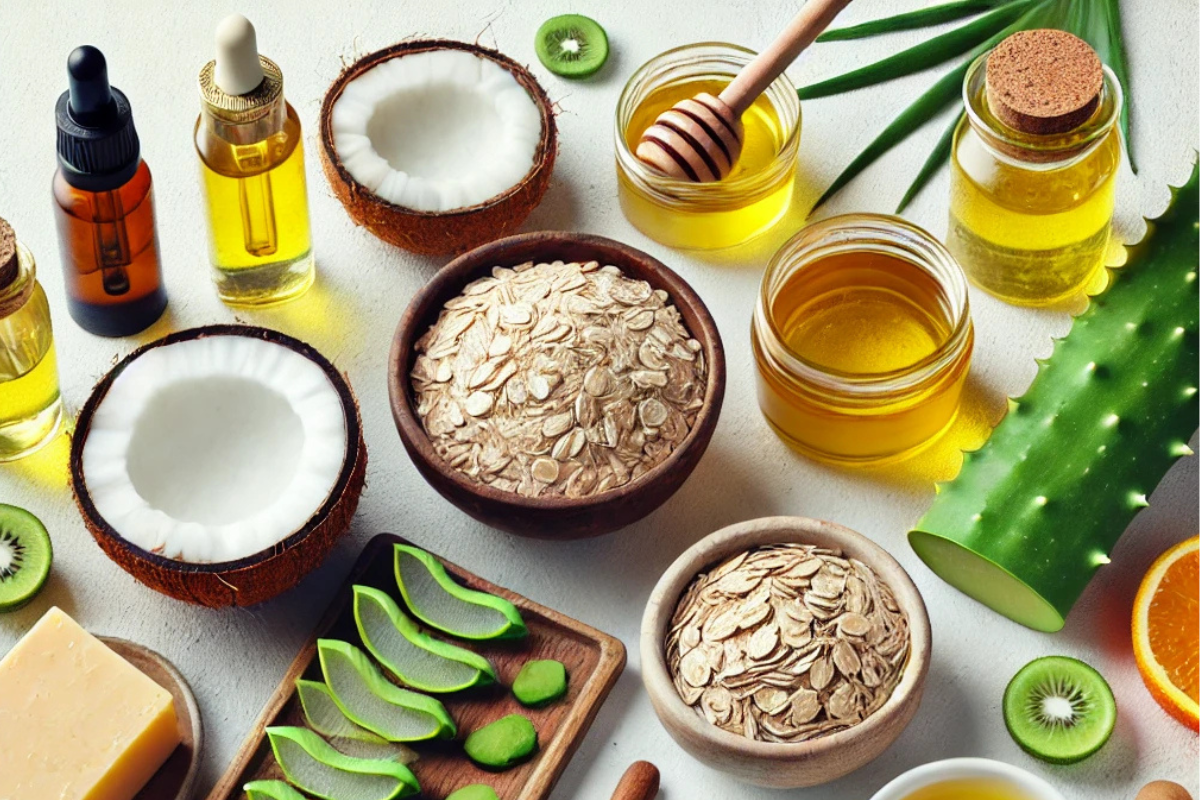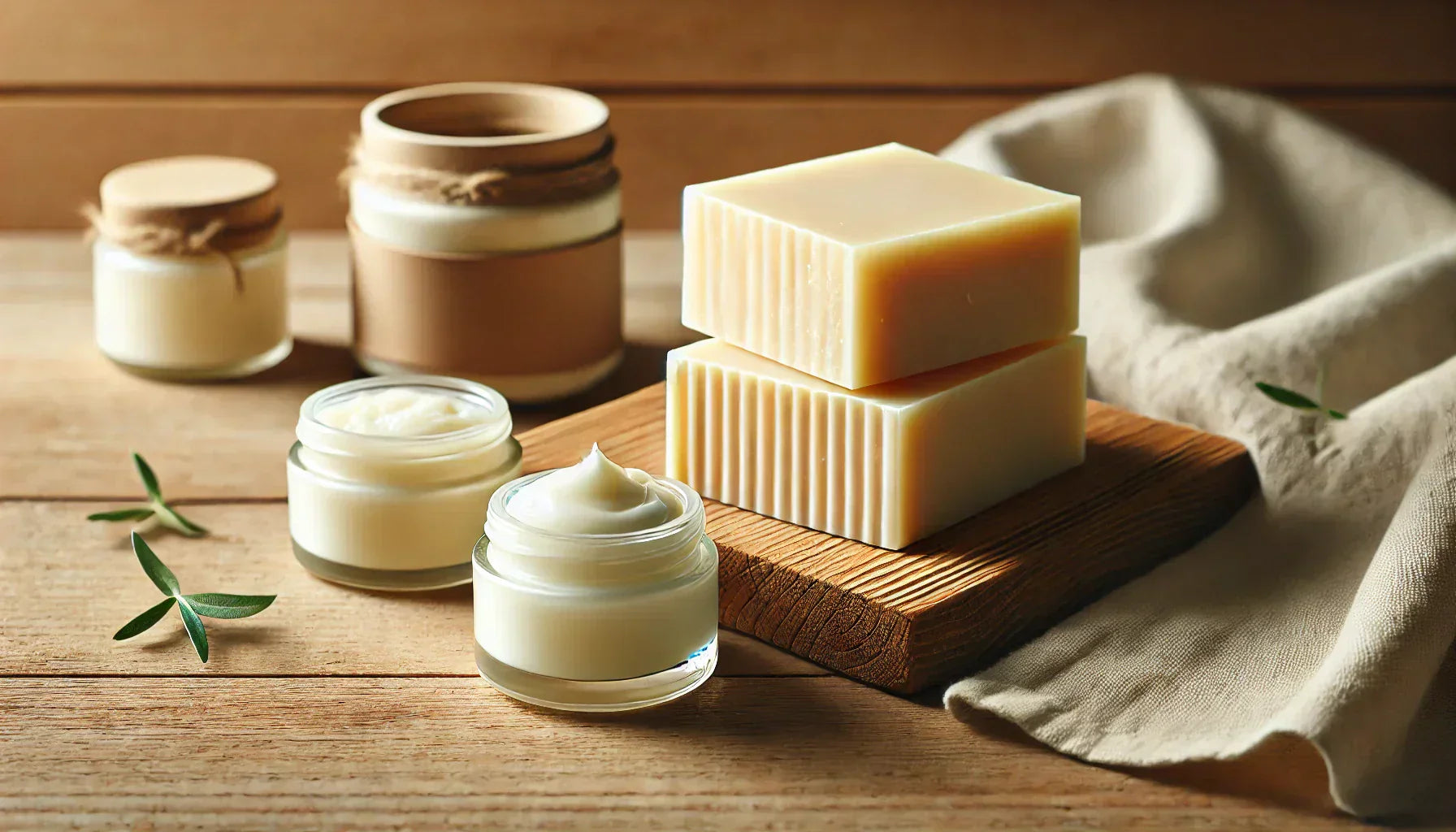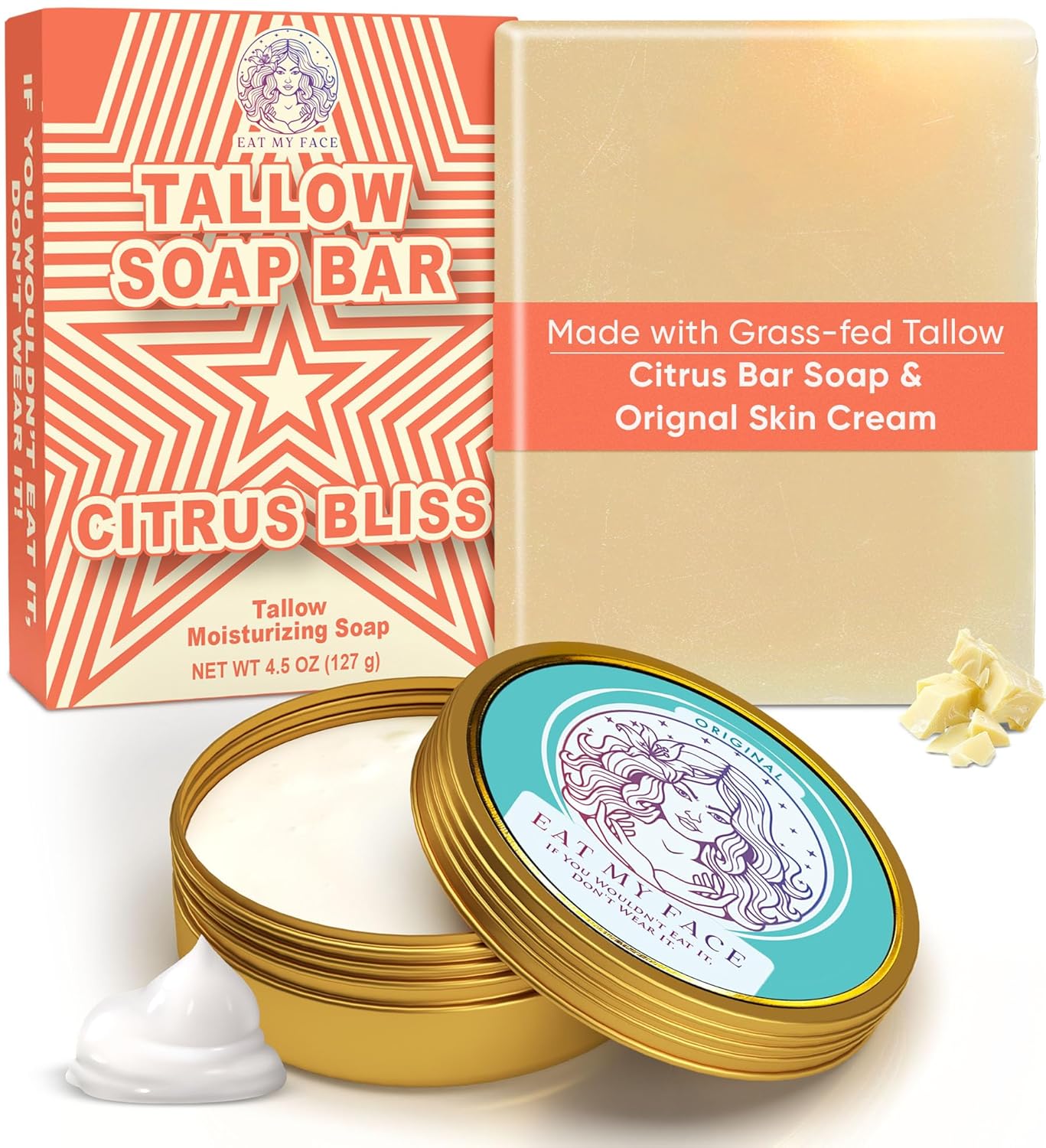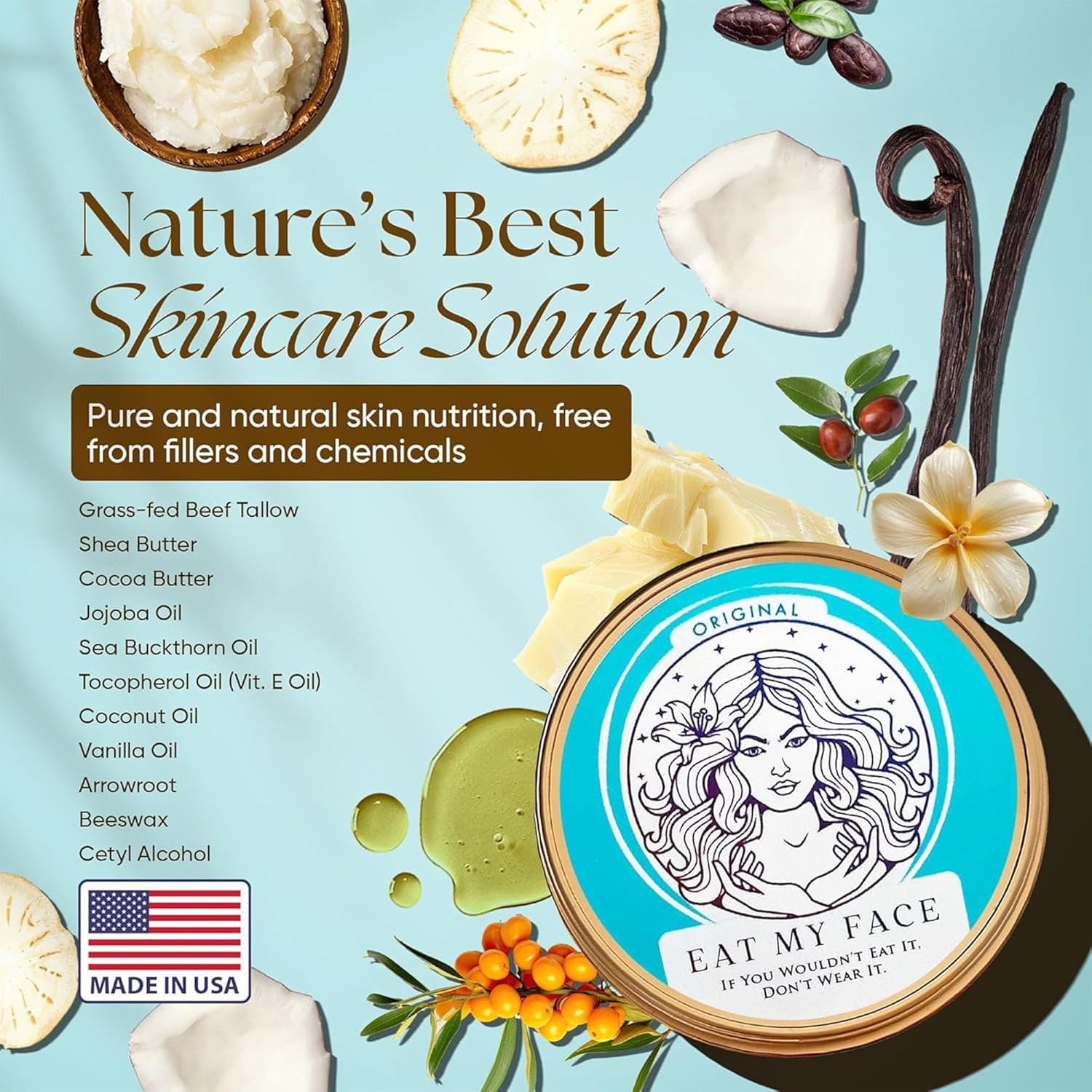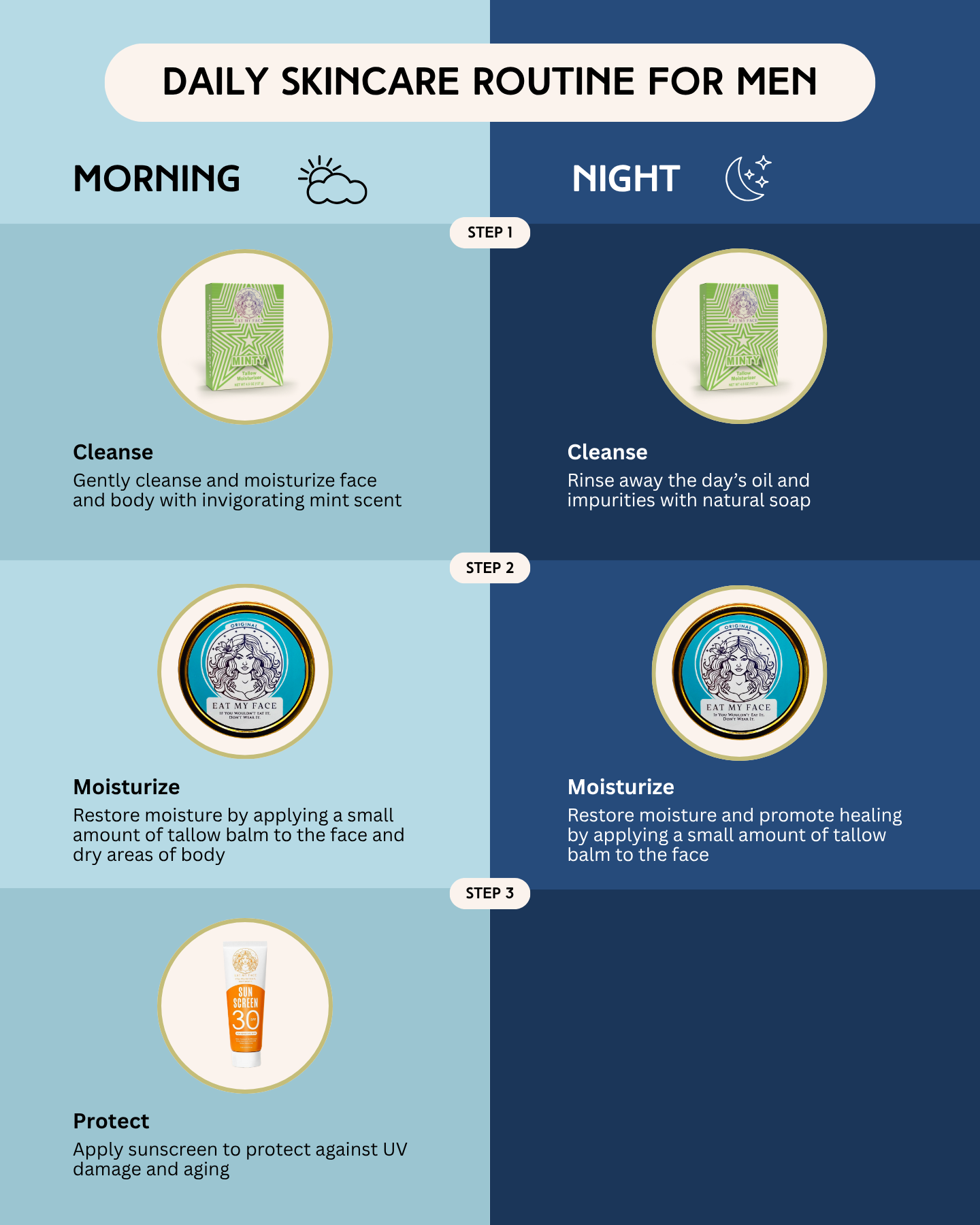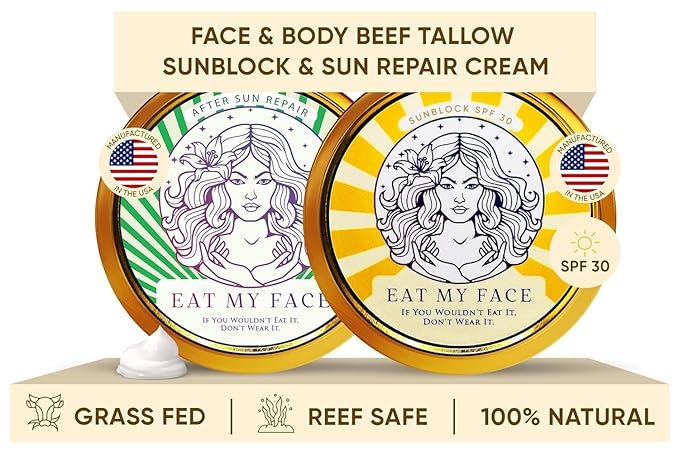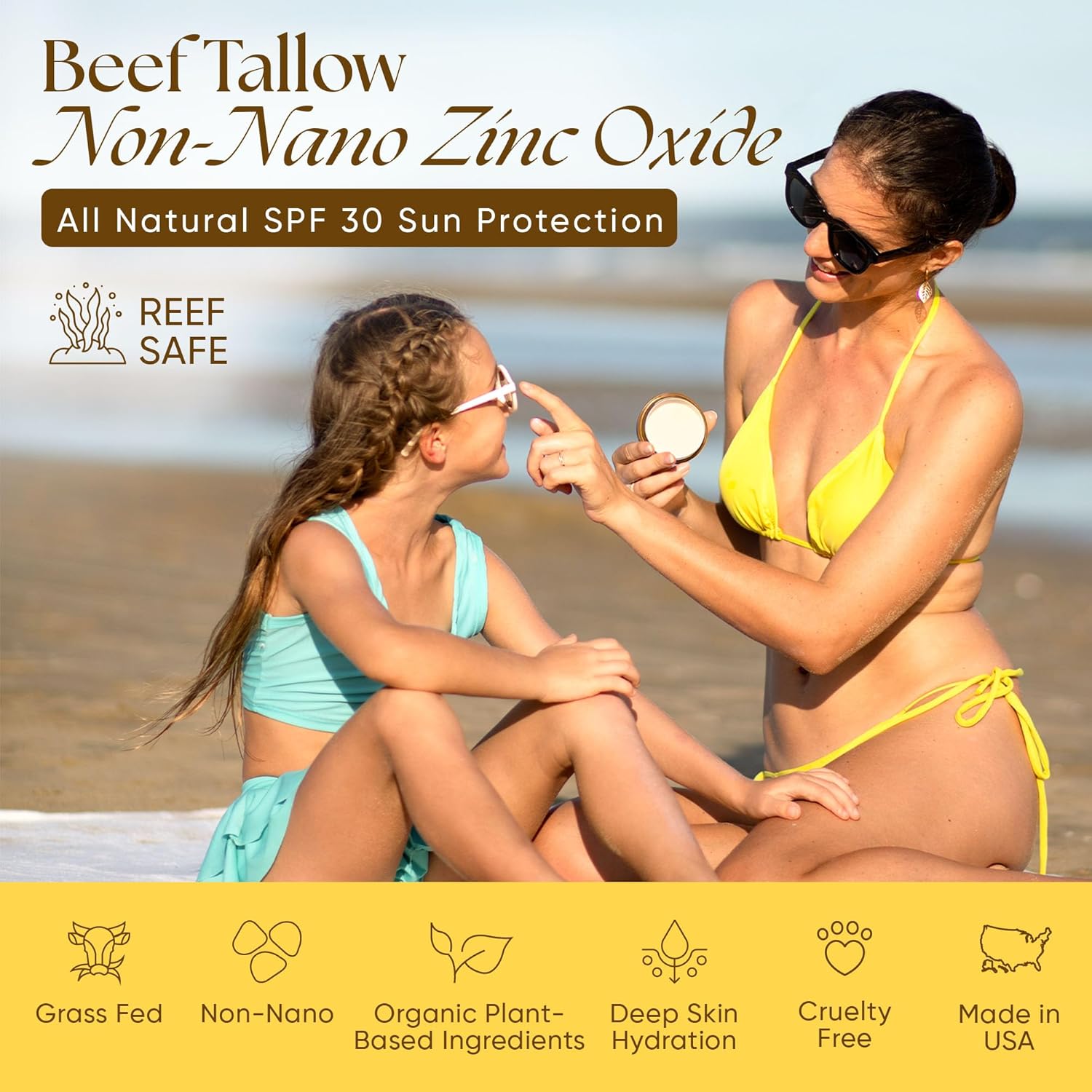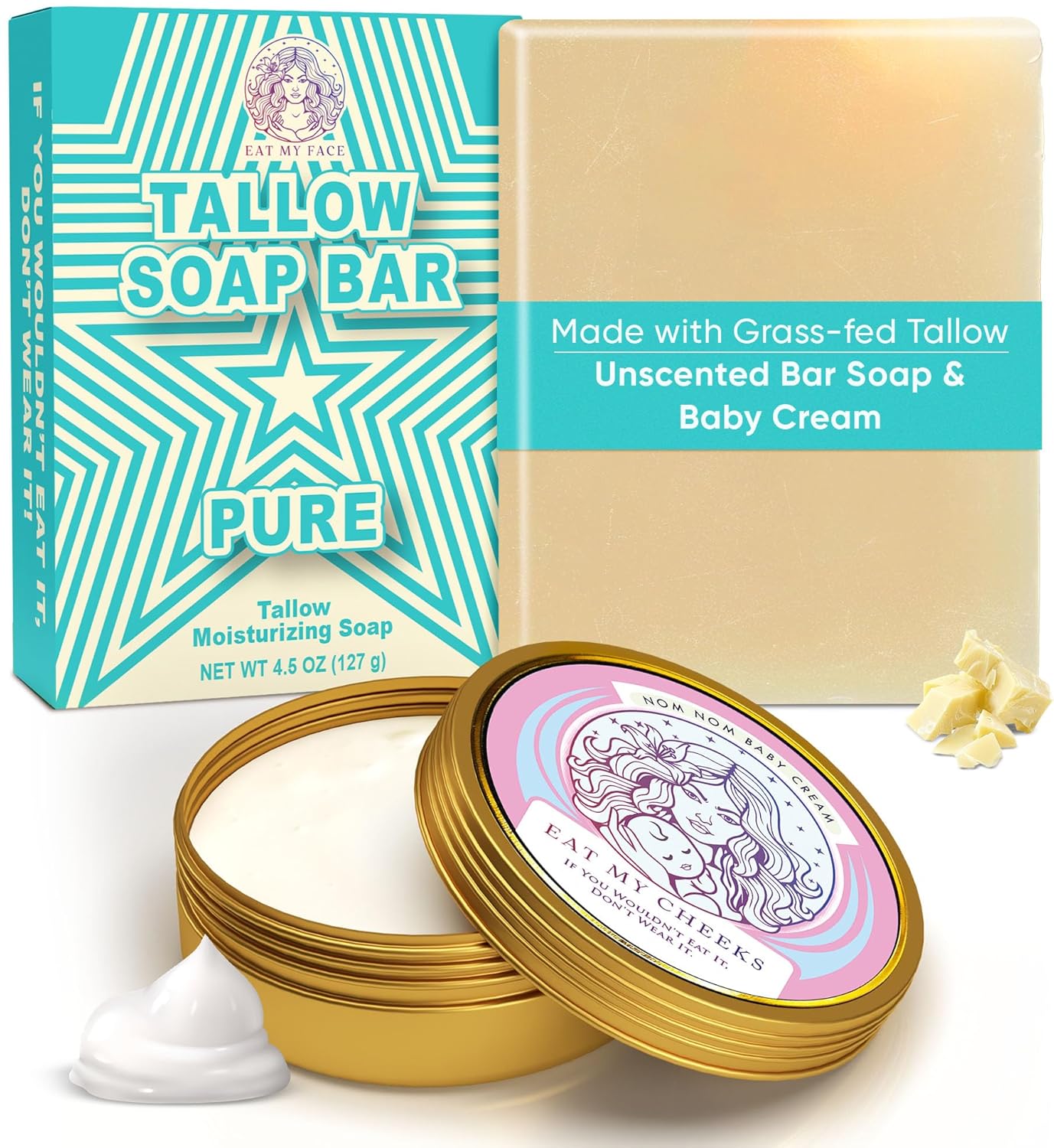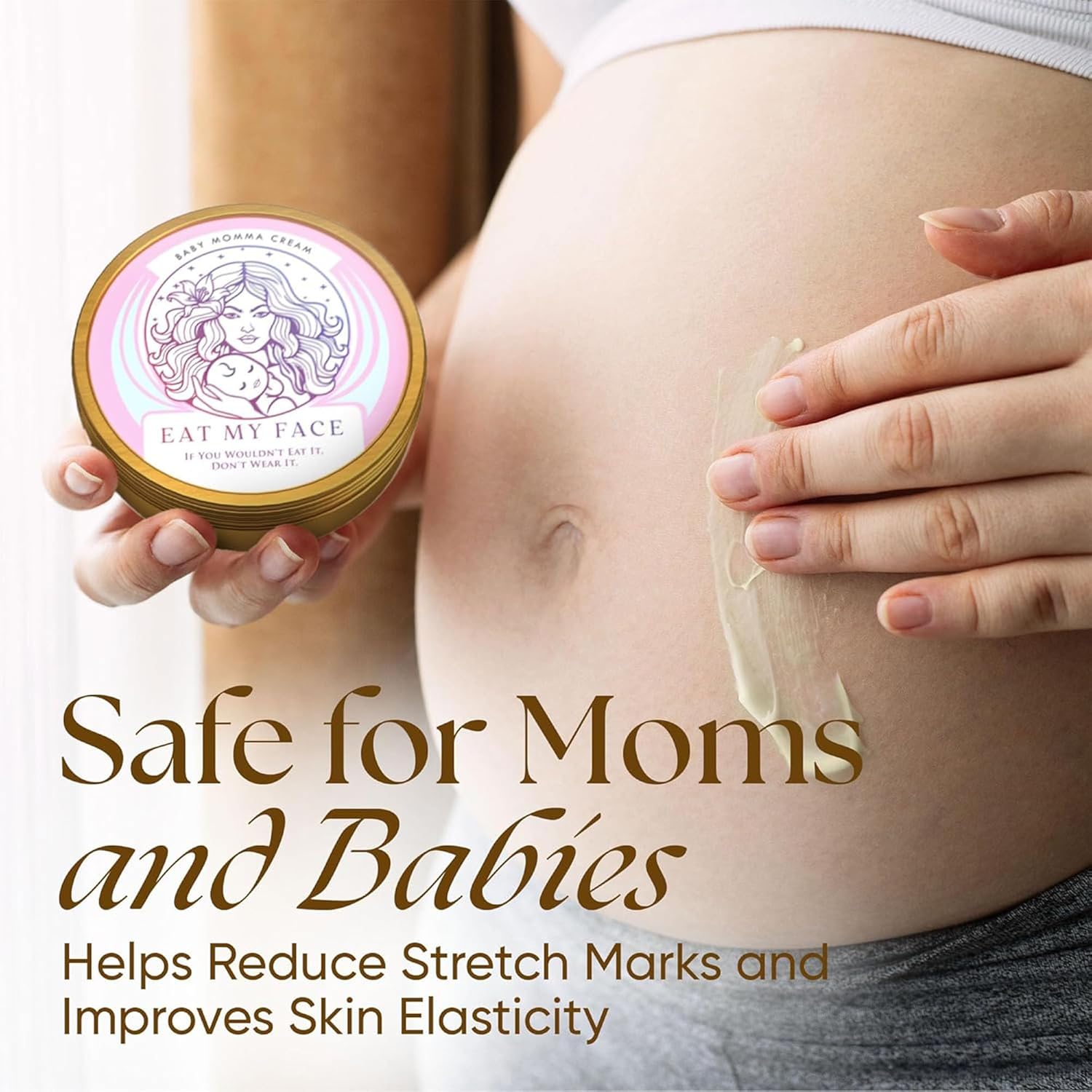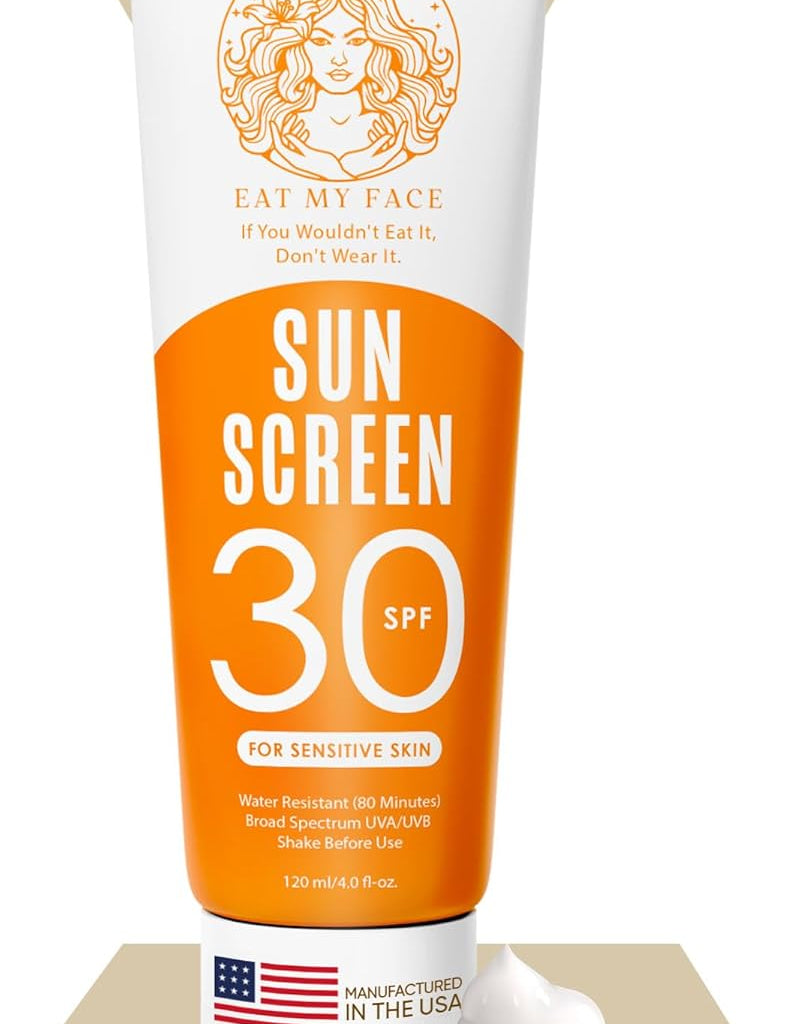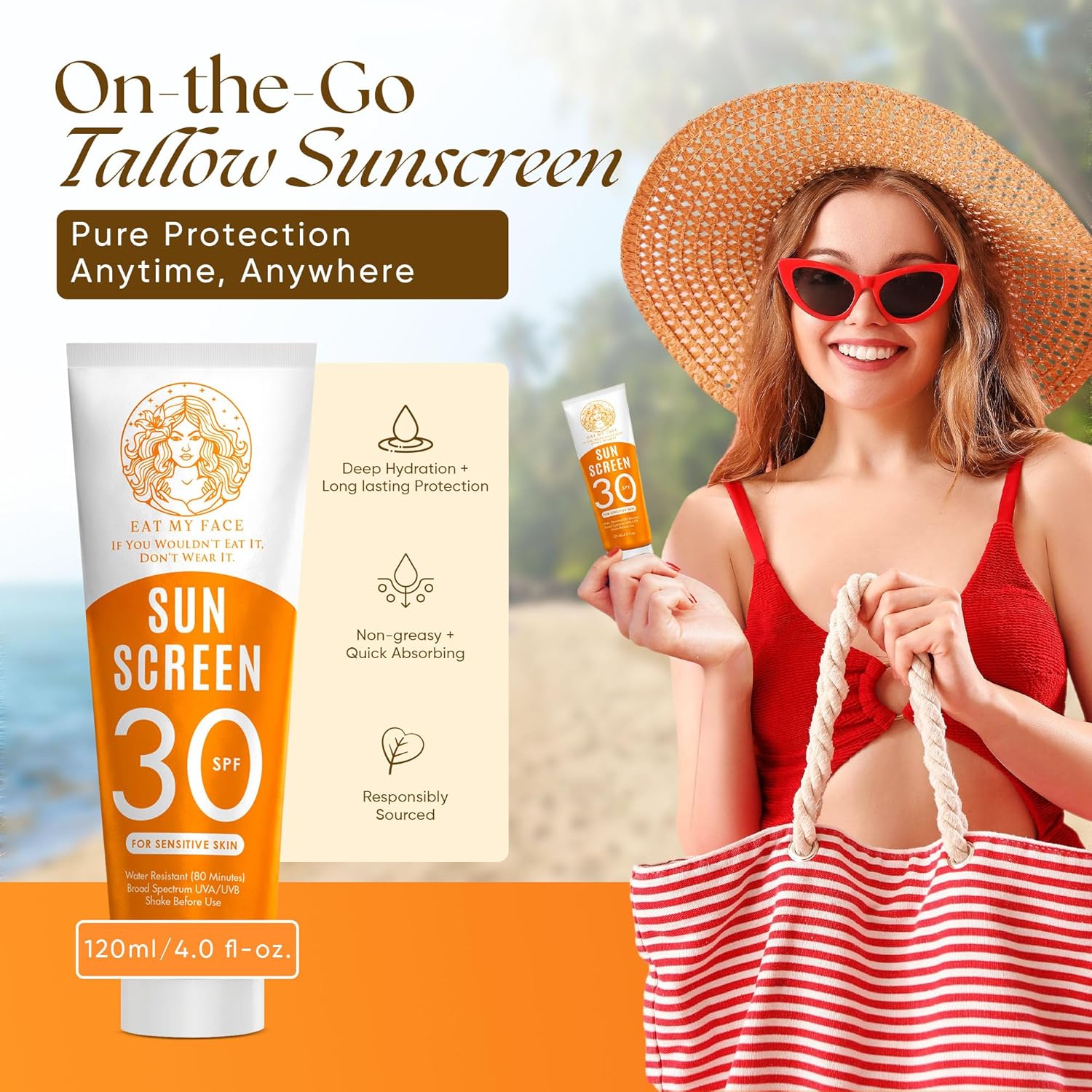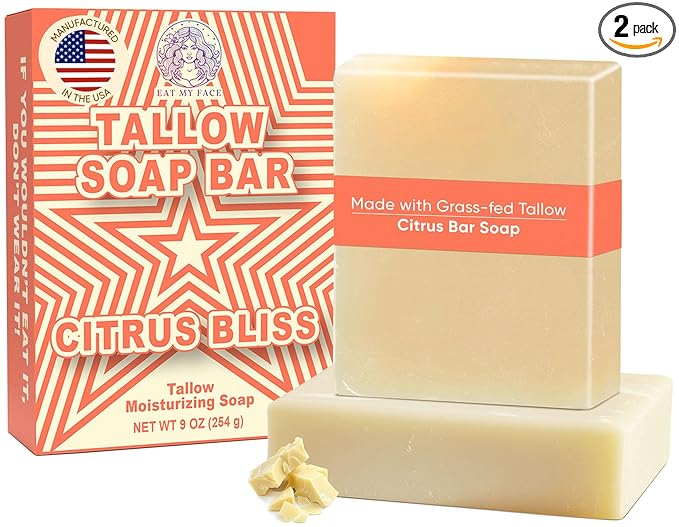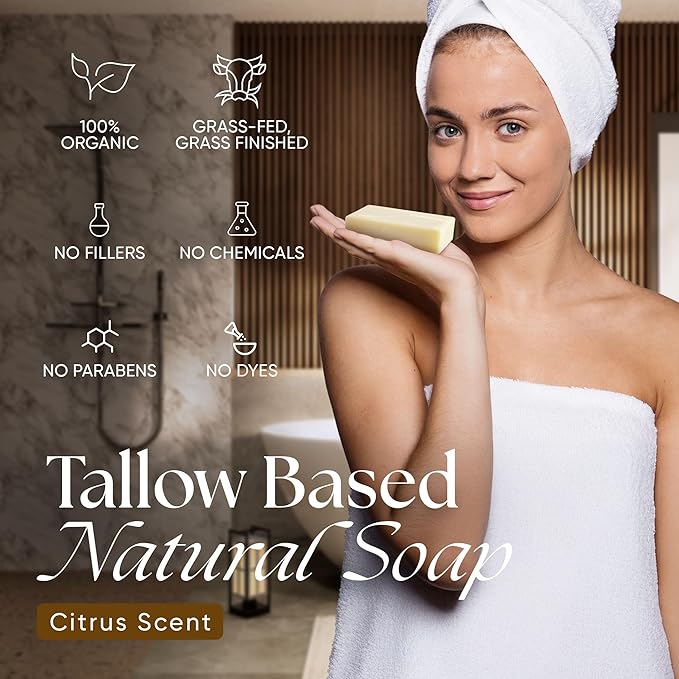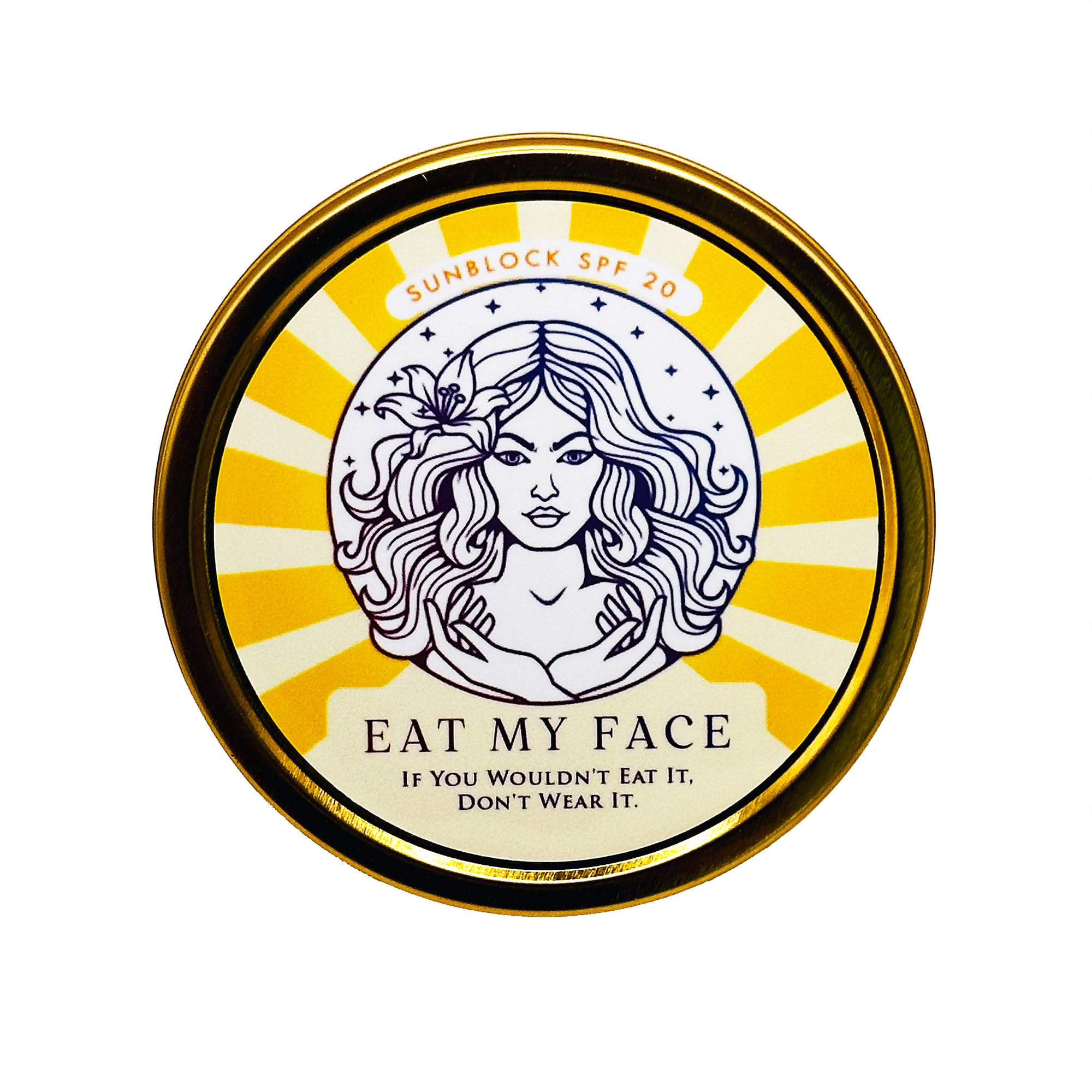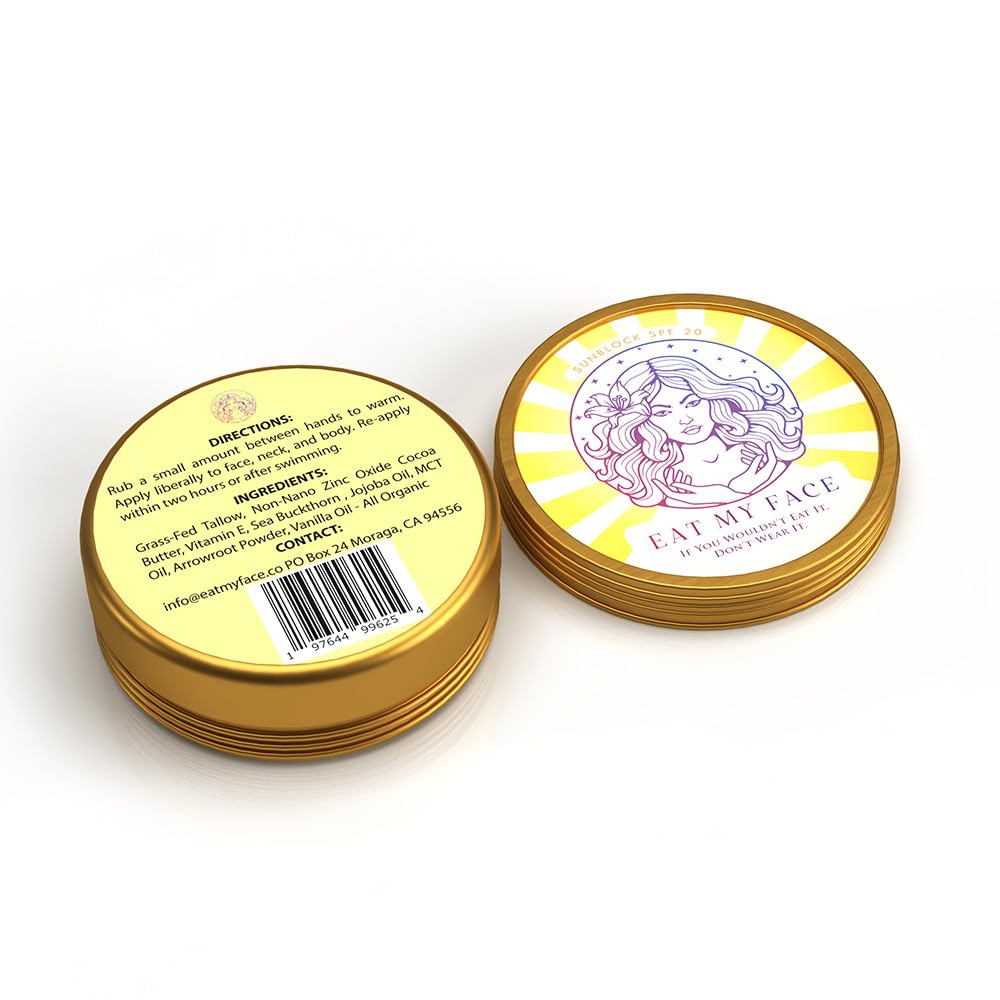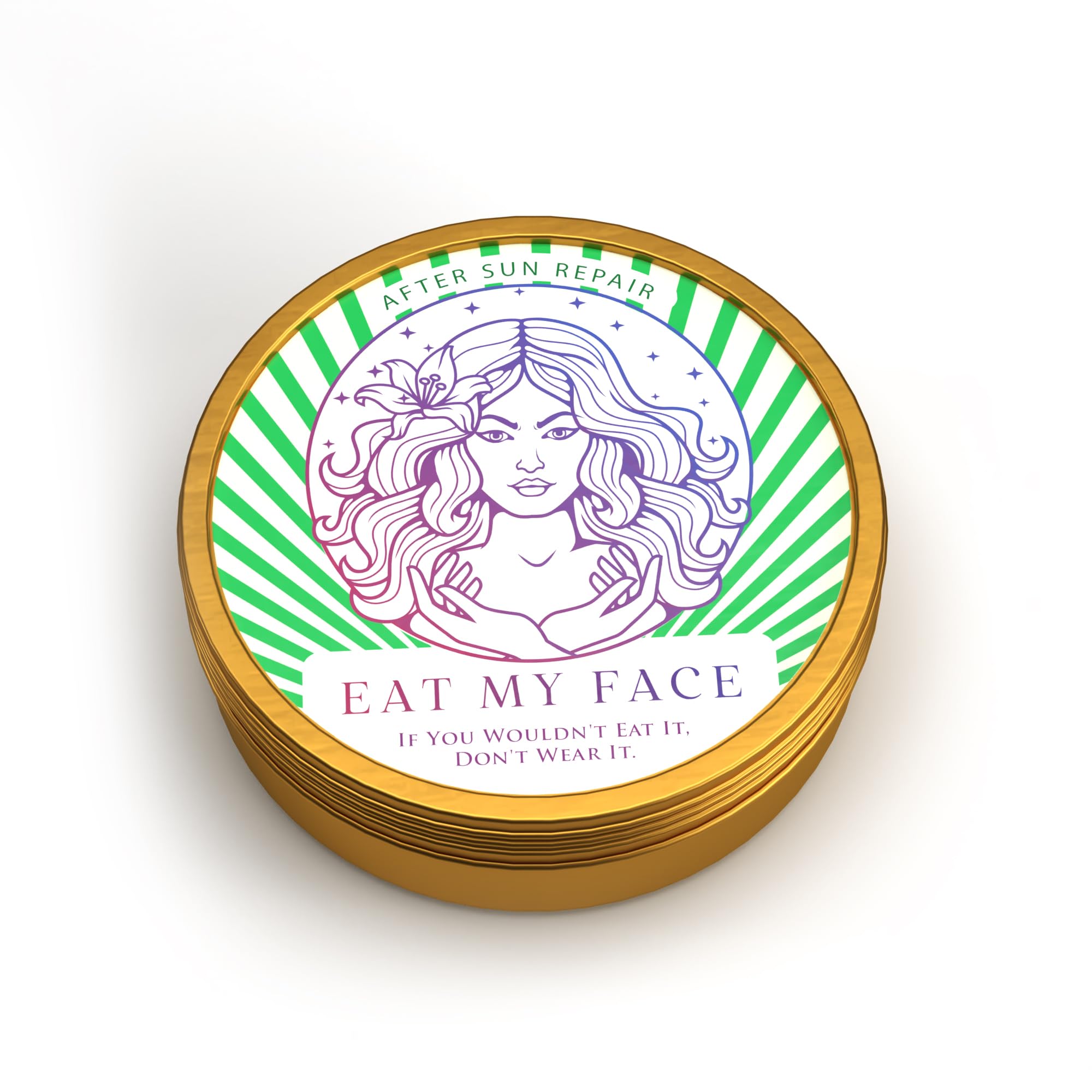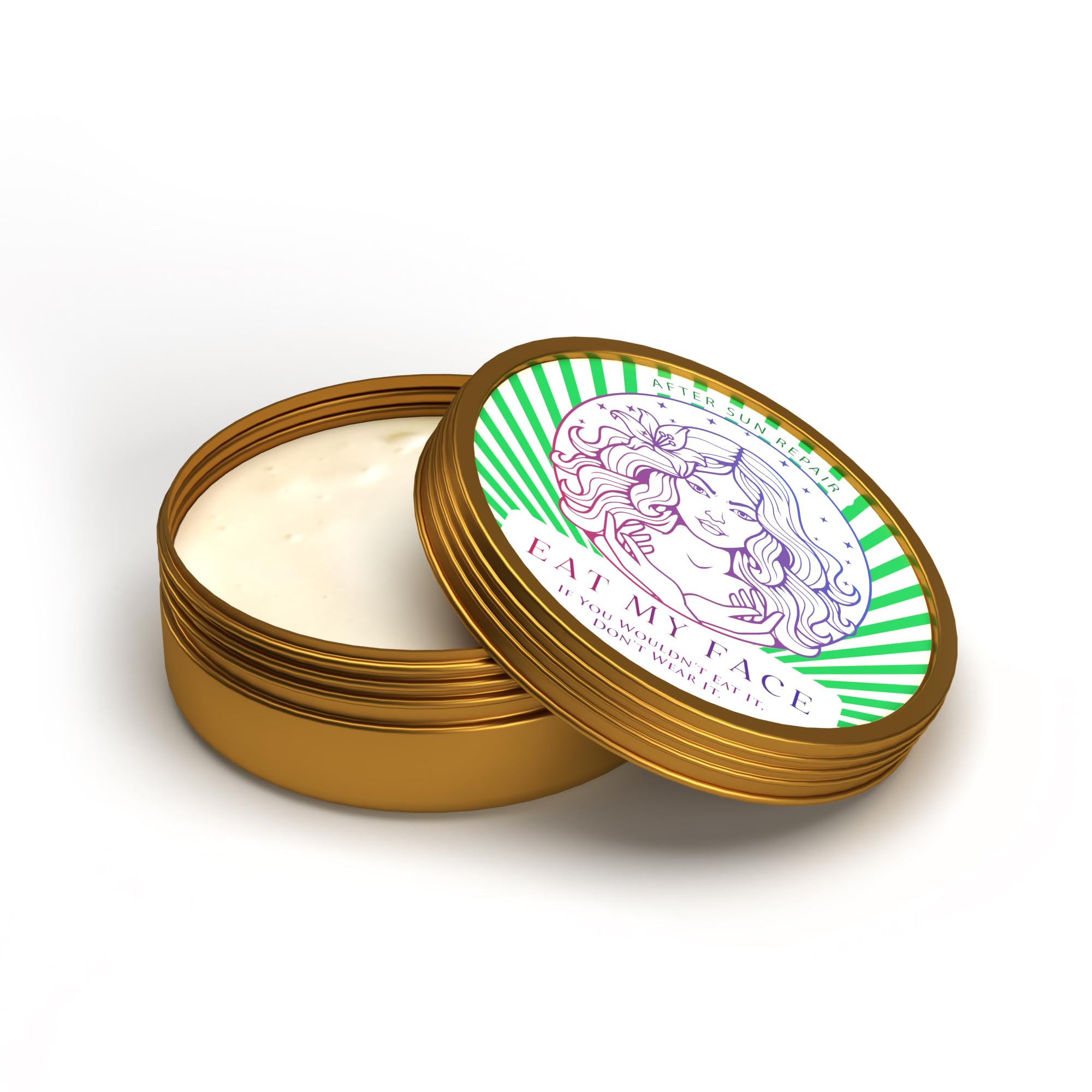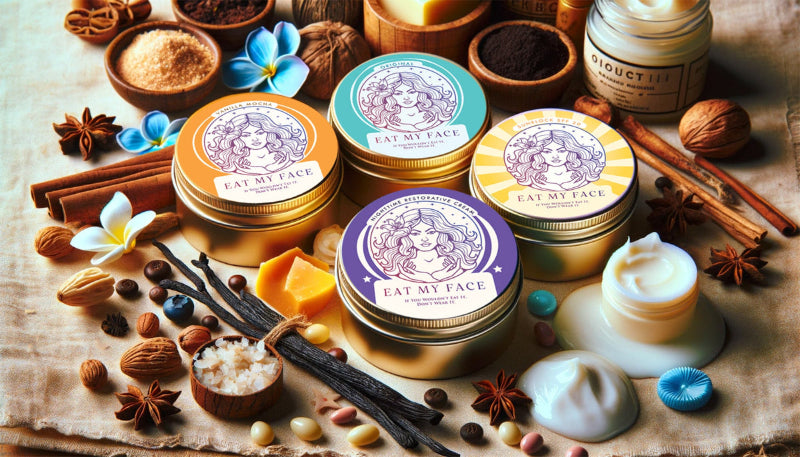Abstract
Sun exposure is essential for vitamin D synthesis and overall well-being; however, excessive ultraviolet (UV) exposure can lead to oxidative stress, dehydration, and inflammation of the skin. This article explores the benefits of using tallow as a primary ingredient in after-sun skincare, emphasizing its compatibility with the skin’s natural lipid structure. Furthermore, we examine how our Tallow After-Sun Repair Balm, enriched with cucumber oil, aloe vera butter, vitamin E, and sea buckthorn oil, effectively restores moisture, reduces inflammation, and supports skin healing after sun exposure, particularly when used alongside our tallow sunscreen.
Introduction
Prolonged sun exposure can cause skin damage due to the breakdown of collagen, depletion of moisture, and increased production of reactive oxygen species (ROS). Many conventional after-sun products contain synthetic ingredients that may provide temporary relief but lack the deeply nourishing components necessary for full skin recovery. Tallow, a traditional skincare ingredient, is an excellent natural alternative that mimics the skin’s sebum, offering deep hydration and essential fatty acids.
The Role of Tallow in After-Sun Care
Tallow, derived from rendered animal fat, is a highly bioavailable source of nutrients that support skin repair. It contains:
-
Stearic and oleic acids, which provide deep hydration and strengthen the skin’s lipid barrier.
-
Vitamins A, D, E, and K, essential for cellular regeneration and protection against oxidative stress.
-
Natural anti-inflammatory properties, which help soothe irritation and redness caused by sun exposure.
When used in after-sun applications, tallow replenishes lost moisture, restores elasticity, and protects against further dehydration.
Key Ingredients in Our Tallow After-Sun Repair Balm
Our after-sun balm is formulated with carefully selected ingredients that enhance the benefits of tallow, creating a holistic skin recovery solution:
-
Cucumber Oil: Rich in antioxidants and phytosterols, cucumber oil cools and soothes inflamed skin, reducing redness and irritation caused by UV exposure. Its hydrating properties help maintain moisture balance and prevent peeling [1].
-
Aloe Vera Butter: Aloe vera is widely known for its skin-healing properties. Aloe butter, a combination of aloe vera and natural fats, deeply moisturizes the skin while providing anti-inflammatory and antimicrobial benefits. It accelerates skin repair and reduces sun-induced inflammation [2].
-
Vitamin E: A potent antioxidant, vitamin E neutralizes free radicals generated by UV exposure. It helps to repair damaged skin cells and prevent premature aging while reinforcing the skin’s natural barrier function [3].
-
Sea Buckthorn Oil: One of the richest natural sources of omega fatty acids, sea buckthorn oil contains high levels of vitamin C, beta-carotene, and tocopherols. It promotes collagen synthesis, reduces oxidative stress, and enhances skin regeneration, making it an ideal component for after-sun care [4].
Benefits of Using Tallow After-Sun Balm
-
Deep Hydration: The combination of tallow and nourishing oils restores moisture lost during sun exposure.
-
Anti-Inflammatory Action: Aloe vera butter and cucumber oil provide immediate relief from irritation and redness.
-
Cellular Repair: Vitamin E and sea buckthorn oil support skin cell regeneration and healing.
-
Barrier Protection: Tallow strengthens the skin’s natural lipid barrier, preventing further dehydration and sensitivity.
-
Natural and Non-Toxic: Free from synthetic additives, our balm is safe for sensitive skin and ideal for those seeking a natural alternative to commercial after-sun products.
Conclusion
Tallow-based skincare, particularly when combined with botanical extracts and essential vitamins, provides an effective and holistic approach to post-sun exposure recovery. Our Tallow After-Sun Repair Balm is a superior choice for individuals looking to restore their skin’s health naturally after using our tallow sunscreen. By harnessing the power of traditional and scientifically backed ingredients, this formulation ensures optimal skin hydration, repair, and long-term resilience against sun damage.
Learn more about natural sunscreen here.
Shop natural sun care and sun recovery here.
Learn about Eat My Face's commitment to the environment and clean, edible skincare here.
References
-
Rattanawongwiboon, N., et al. (2016). "Antioxidant and Anti-inflammatory Effects of Cucumber Extract in Skin Applications." Journal of Dermatological Research, 18(4), 245-258. [Available at: https://www.ncbi.nlm.nih.gov/]
-
Surjushe, A., Vasani, R., & Saple, D. G. (2008). "Aloe Vera: A Short Review." Indian Journal of Dermatology, 53(4), 163–166. [DOI: 10.4103/0019-5154.44785]
-
Thiele, J. J., & Ekanayake-Mudiyanselage, S. (2007). "Vitamin E in Human Skin: Organ-Specific Physiology and Considerations for its Use in Dermatology." Molecular Aspects of Medicine, 28(5-6), 646-667. [Available at: https://www.ncbi.nlm.nih.gov/pmc/articles/PMC3583891/]
-
Olas, B. (2020). "Sea Buckthorn as a Natural Source of Bioactive Compounds." Advances in Experimental Medicine and Biology, 1260, 29-38. [DOI: 10.1007/978-3-030-41769-7_3]
